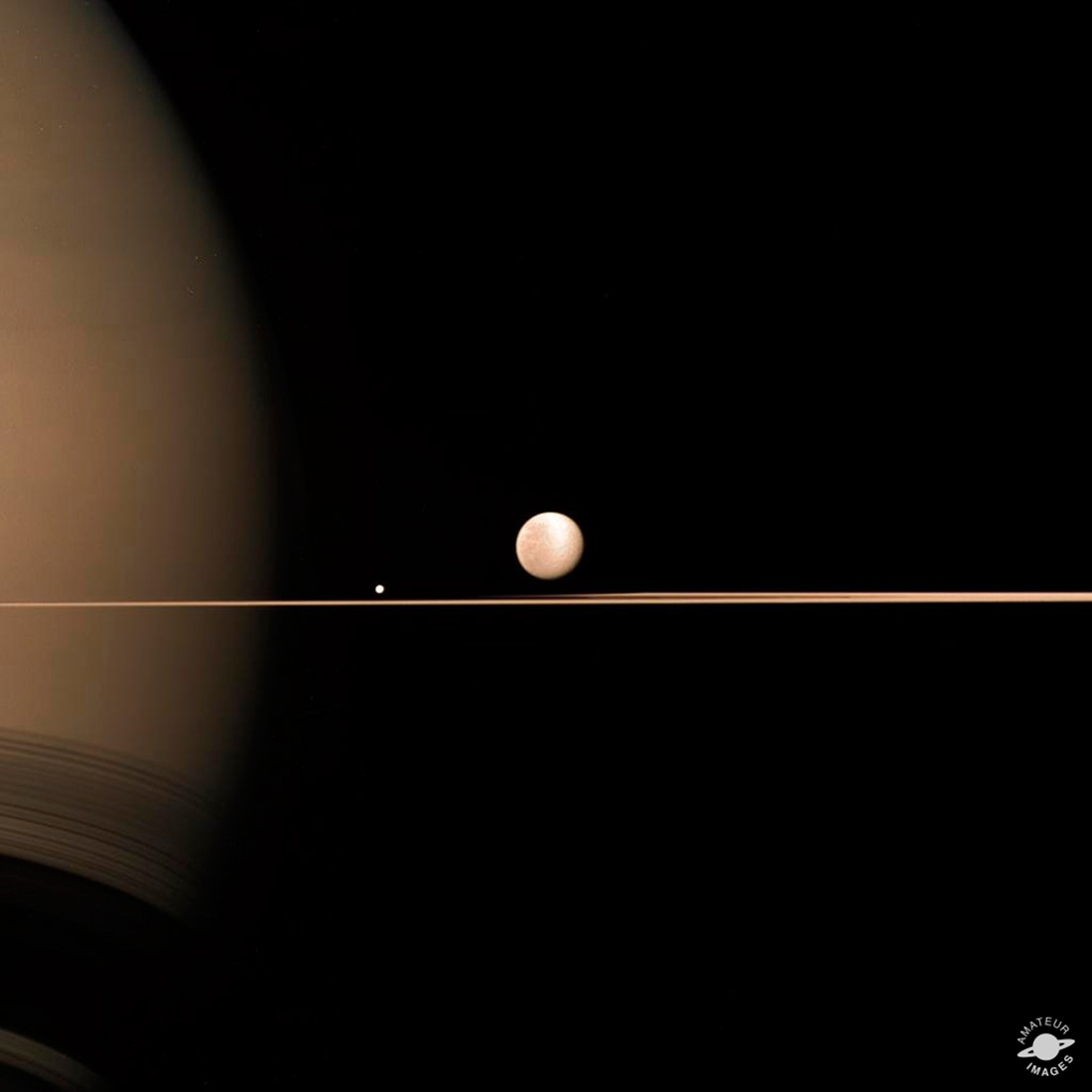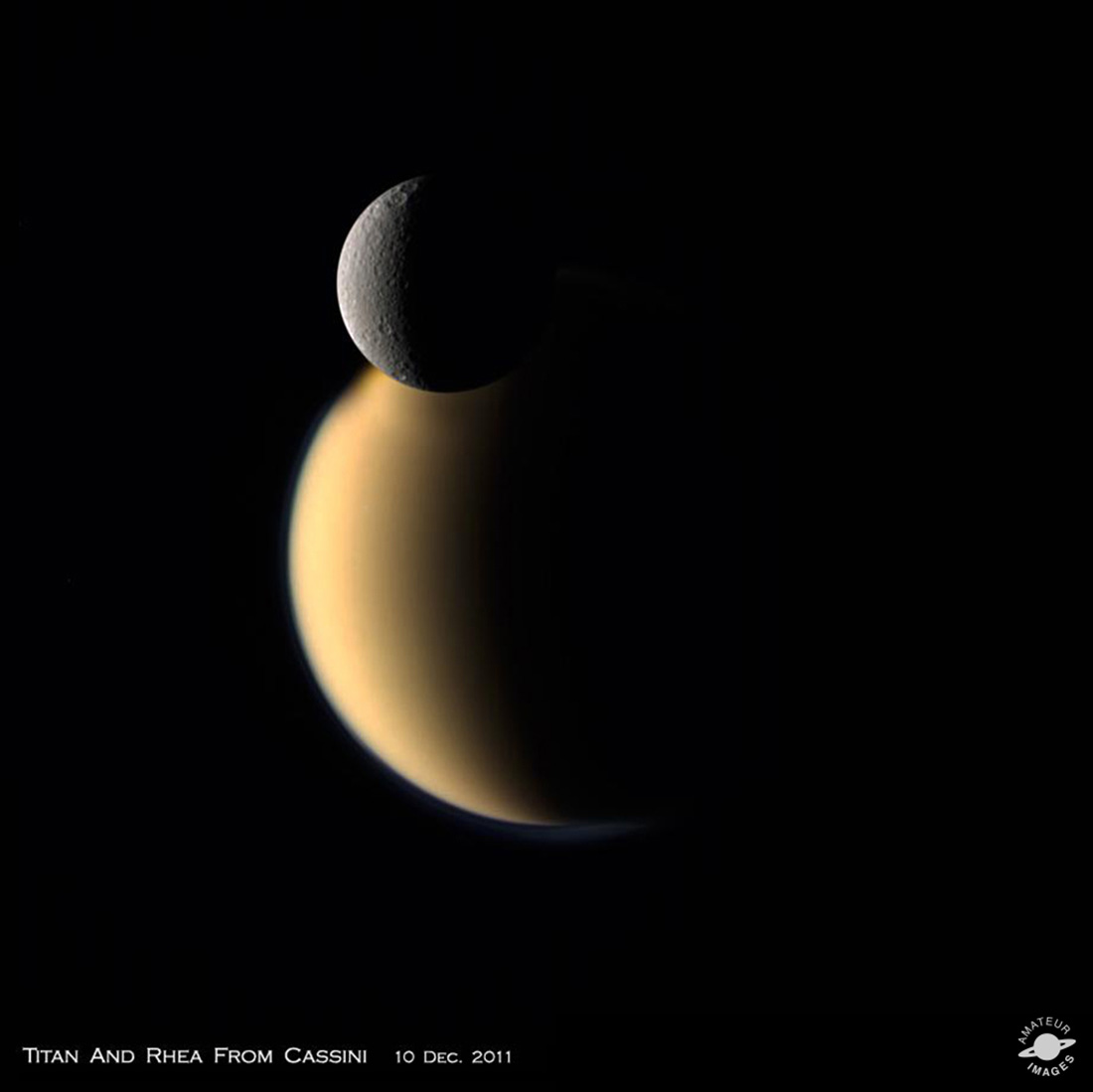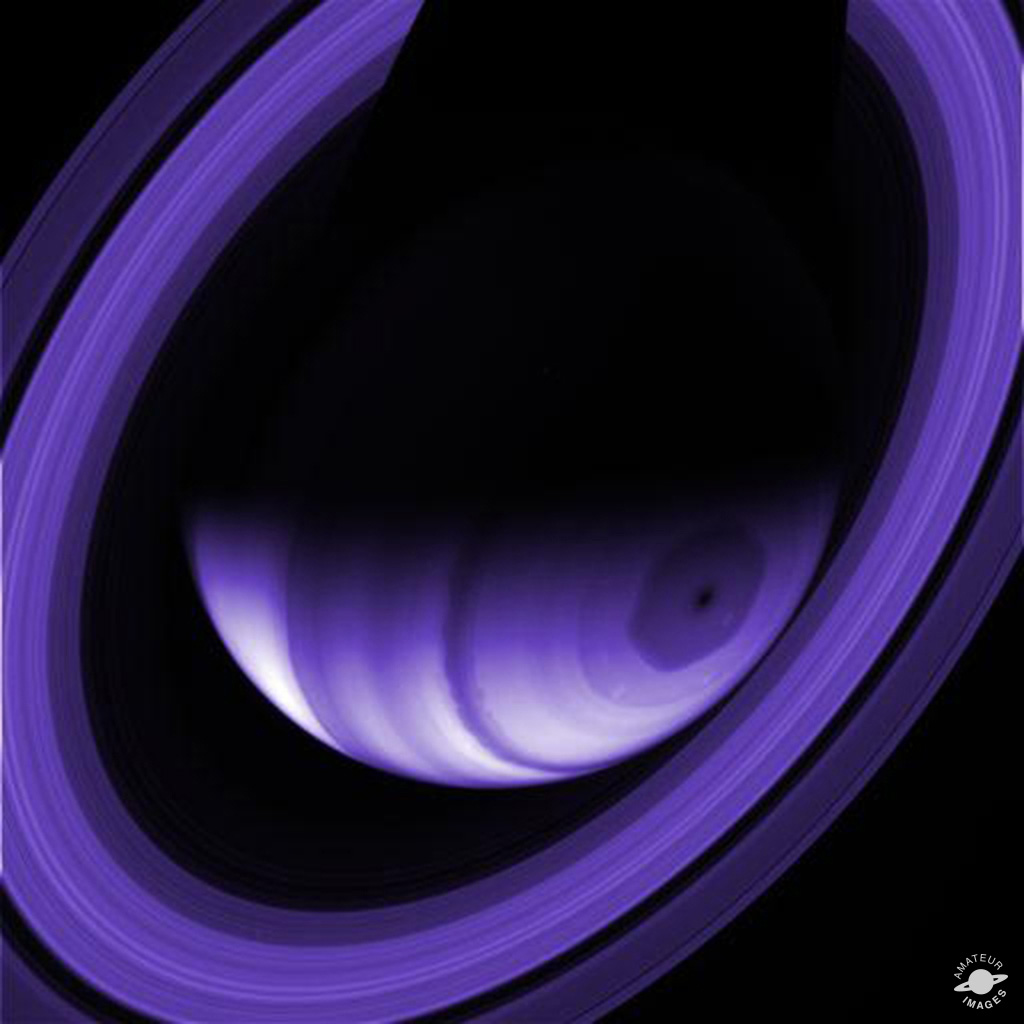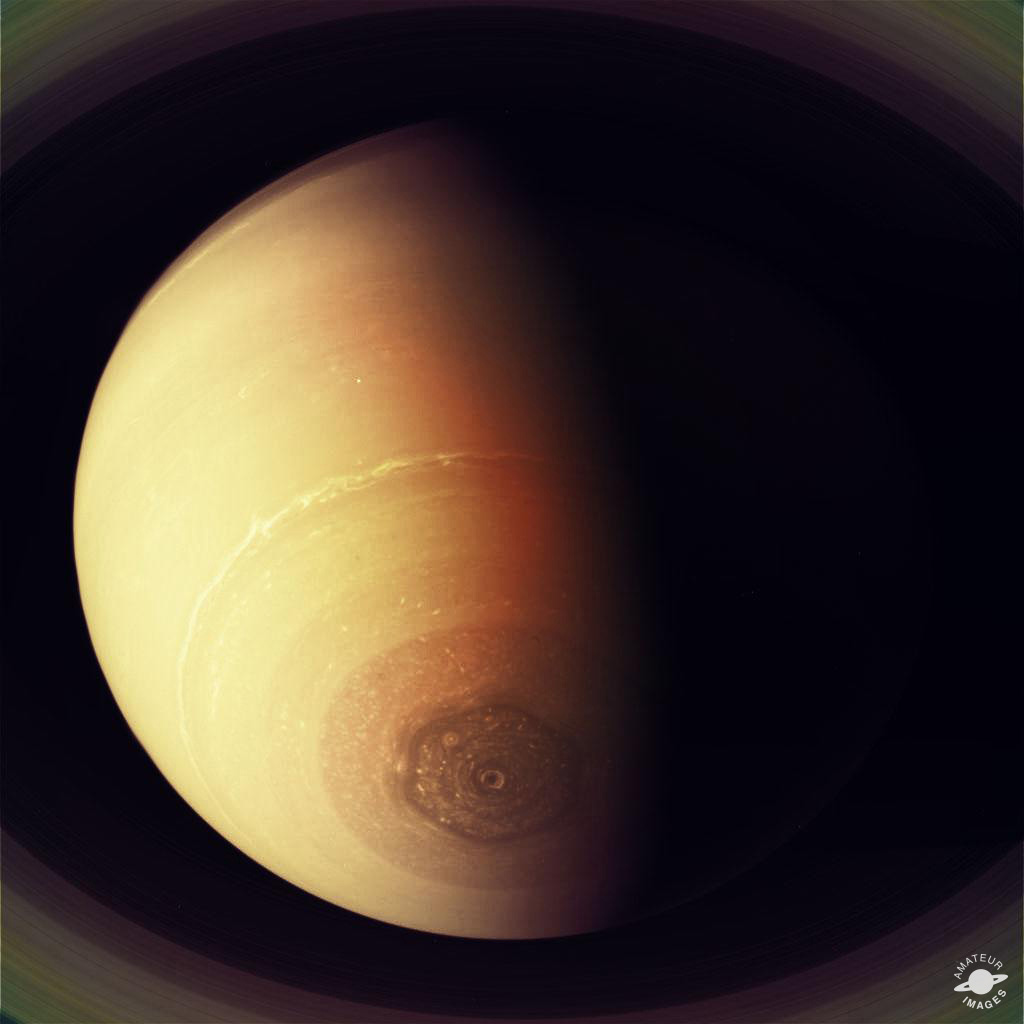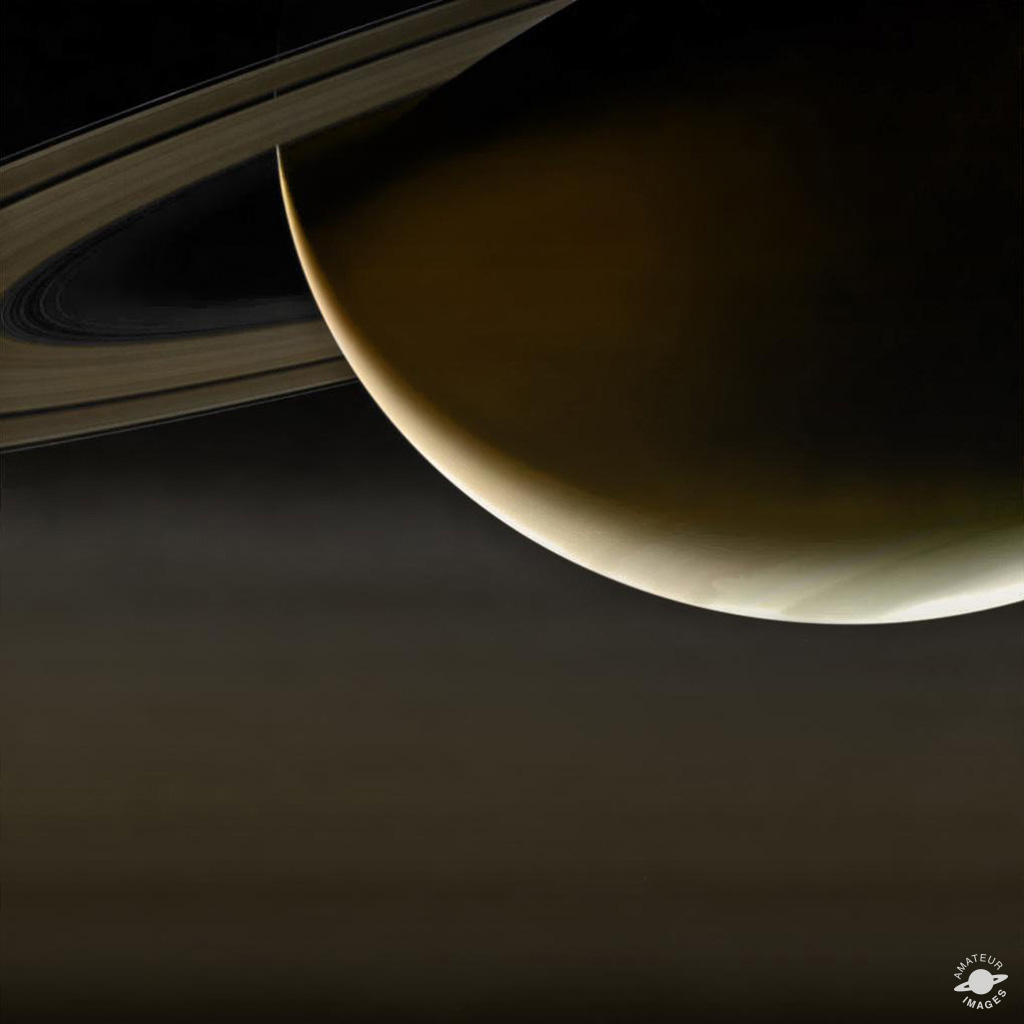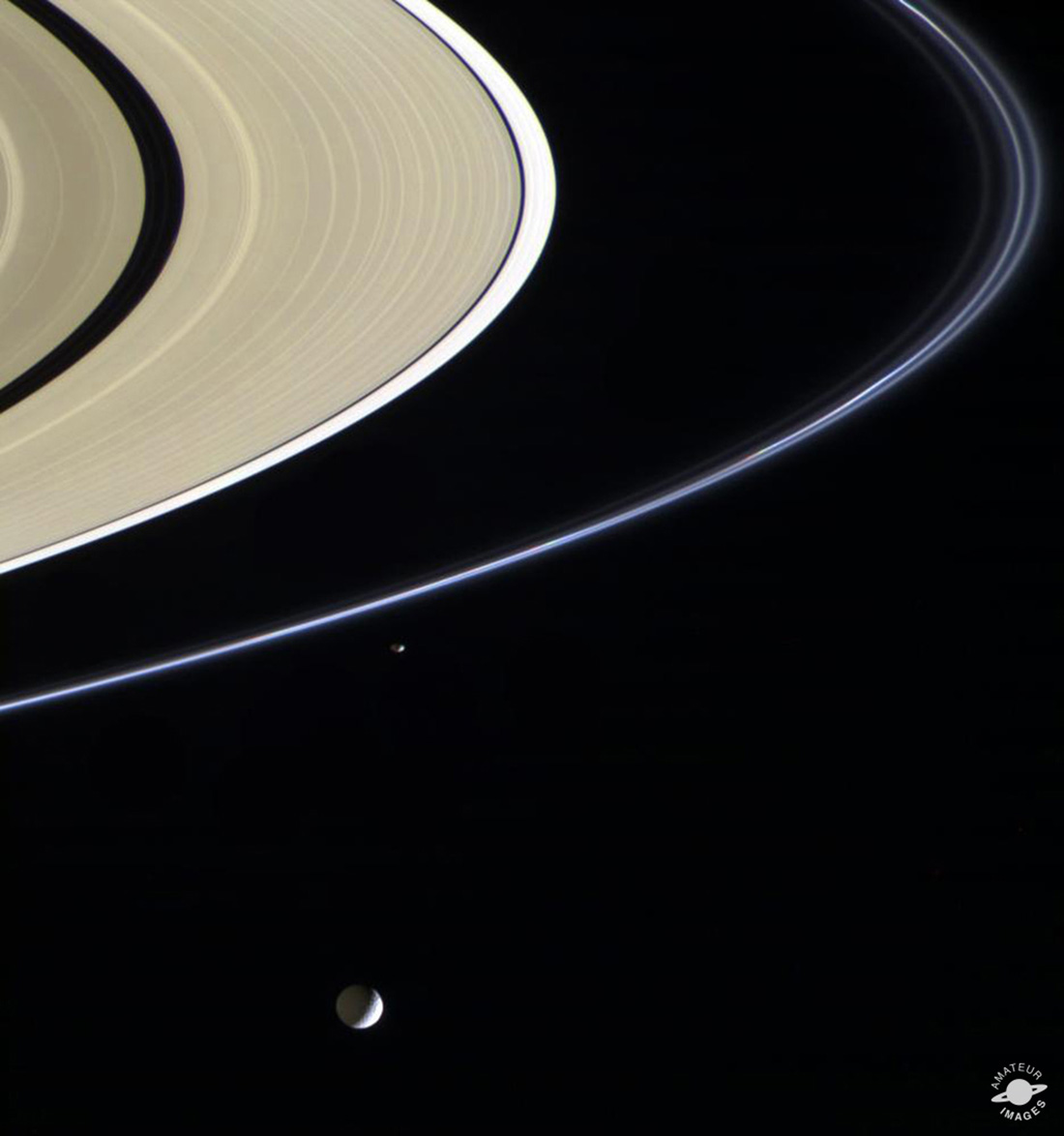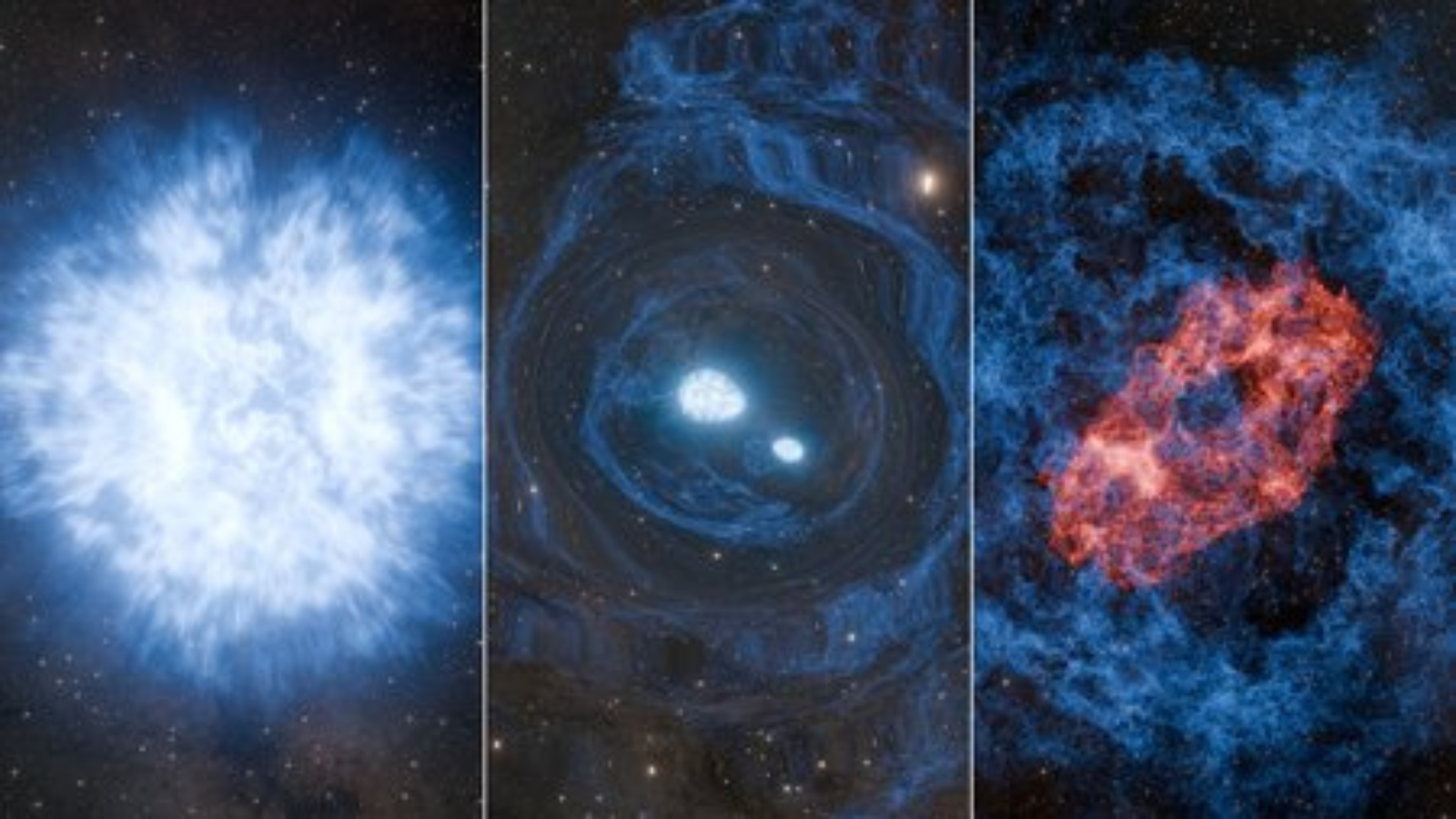Spectacular Saturn Images by 'Amateurs' Will Make Your Jaw Drop
Wow! Saturn
Since 2004, the Cassini spacecraft has been orbiting Saturn, collecting gobs of data and images, resulting in major discoveries — from geysers and hydrothermal activity on Saturn's moon Enceladus to the dynamics of the planet's rings — plus some glorious artwork. Since all the data has been made available to the public, some enthusiasts have created their own images. NASA has called these "amateur images," but you'll likely be wowed beyond belief.
3 little moons
Ian Regan created this image from a sequence captured by Cassini over 90-plus minutes on the morning of Oct. 28, 2016, Regan said. Three of Saturn's moons are visible in the image: Epimetheus, Atlas and Prometheus. The moon Epimetheus can be seen near Saturn, just above the right ansa, or the portion of the ring that appears farthest away from the planet's disk in the image. Meanwhile, Atlas and Prometheus can be seen at the tip of the left ansa. Regan noted that Pan (a moon in the A ring) is too faint to be detectable; Janus, the potato-shaped moon in the gap between the F and G rings, must be just out of frame, he added.
Moons float in midair
One of Elisabetta Bonora's favorite pastimes seems to be exploring the raw images snapped from the Cassini spacecraft and creating something amazing from them. "It's wonderful to be able to take advantage of Cassini's eyes," Bonora said in a NASA statement. "I like to dream I am there too." Bonora, a video and web analyst who lives near Savona, Italy, said this particular image jumped out at her: "From the get go, I thought this image was a splendid example of great composition and beautiful geometry."
The image shows Saturn on the left, with very thin rings that appear almost perpendicular to the field of view, she noted. "On top of the rings, right in the middle of the image, there are two moons (Rhea and Mimas) suspended in midair. It's simply a picture-perfect scene," she said.
Orbs at the edge of Saturn rings
Senior editor of The Planetary Society, Emily Lakdawalla captured this gorgeous snapshot revealing five Saturnian moons. "Cassini caught five moons at the edge of Saturn's ring system in this natural color photo from July 29, 2011." The moons, starting at the left of the image: Janus, Pandora, Enceladus, Mimas and Rhea.
Titan moon
Jason Major created this RGB-composite showing Saturn's largest moon Titan. Major used raw Cassini images acquired on Jan. 2, 2014. "The moon's south polar vortex can be seen just along the terminator, as well as its cyan-colored upper-level haze layer," Major said in a NASA statement.
Titan and Rhea
Adam Hurcewicz created this image of Titan and Rhea from a raw Cassini image taken on Dec. 10, 2011. Though Saturn's second-largest moon, Rhea is still dwarfed by Titan; The highly cratered Rhea has an average radius of 475 miles (764 km), or less than a third that of Titan, according to NASA.
Breaking space news, the latest updates on rocket launches, skywatching events and more!
Saturn in blue
"This is our first attempt at playing with one of the raw images. We wanted to get our 13-year-old excited about space exploration," image producer Earnest Hamby said in a NASA statement."The image was created with iPhoto on our iPad and only took a few minutes. We're true amateurs who appreciate everything the Cassini team is doing. Keep up the good work."
Color me purple
Gloria Roberts created this image of Saturn from a raw image taken by Cassini on March 20, 2014. Roberts used Adobe Photoshop Elements to colorize the resulting image to create the purple hue. On March 24, 2014, on Cassini's 203rd orbit, the spacecraft was about 1.9 million miles (3 million kilometers) from Saturn.
Saturn bizarre storm
Roseann Arabia created this adaptation of a Cassini raw image (#W00086402) showing the planet Saturn. The image seems to reveal the bizarre hexagon pattern of clouds on the planet's north pole that was discovered in 1988 from data collected during Voyager flybys. A raging storm churns at the center of the hexagon. One idea for how the structure formed and is maintained involves shallow atmospheric jets at the cloud level. Below the clouds, winds keep the hexagon shape and determine how fast it drifts, according to that model, which was published in June 2015 in Astrophysical Journal Letters.
"Editing and color enhancement of the image was performed in Photoshop using filtering, effects, masking, and several tool and brush techniques," Arabia said in a NASA statement.
Crescent Saturn
Stephane Calonnec created this image of Saturn from a raw Cassini image captured on March 12, 2014. She colorized it using standard Saturn colors. "I chose not to remove the blurry light from bottom as it is part of the original picture," Calonnec said in a NASA statement. "I've done it 'just for fun' and to test whether I could do a nice picture of a vessel's [spacecraft's] photo, not pretending scientific or artistic artwork. I just hope you will like it."
Saturn's colors are the result of the composition of its cloud layers, as well as their varying heights, according to NASA. The cloud layers consist mostly of ammonia ice crystals.
Mimas and the inner rings
This image, created by Maksim Kakitsev, shows Saturn's inner rings, the moon Mimas (at the bottom) and the F ring. "This true-color view was created from Cassini's raw images taken on Jan. 18, 2005 using the narrow angle camera and red, green, and blue filters."
Mimas, which looks eerily like the Death Star, the planet-destroying space weapon in "Star Wars," is the closest major moon to Saturn.



